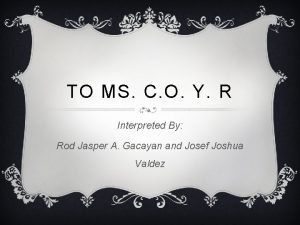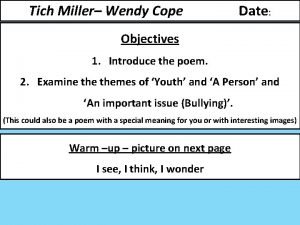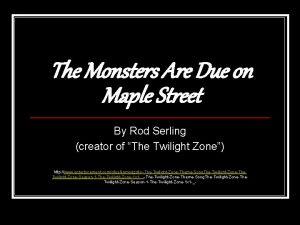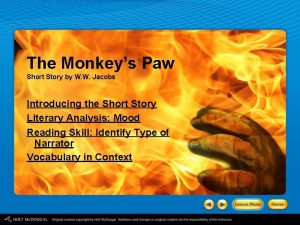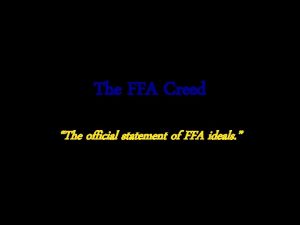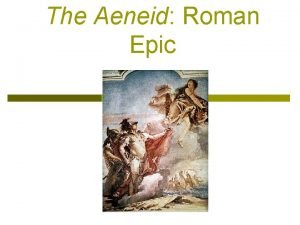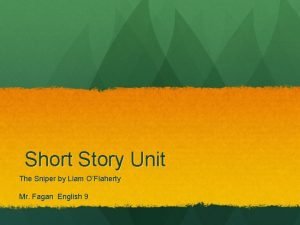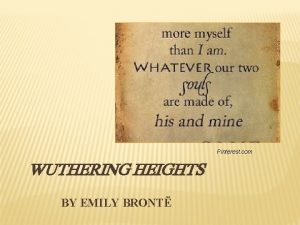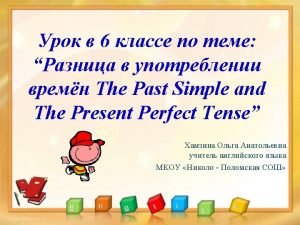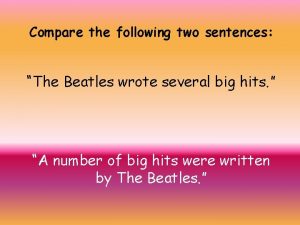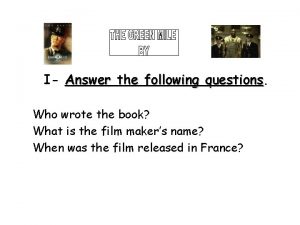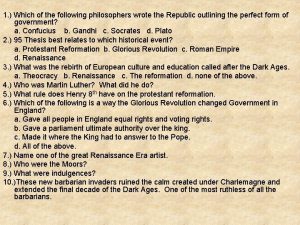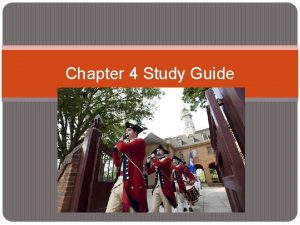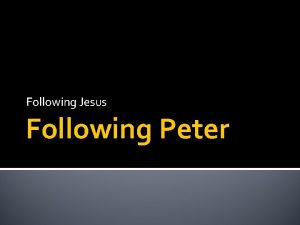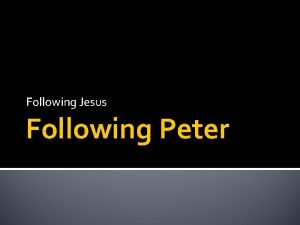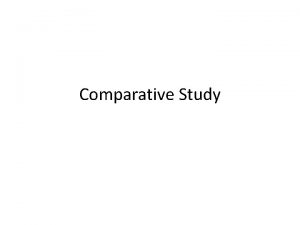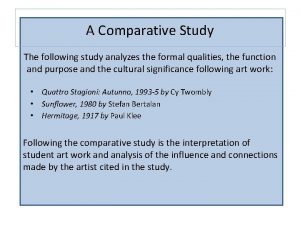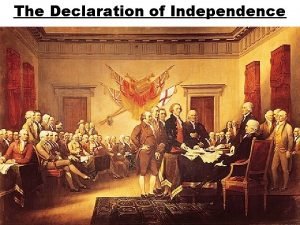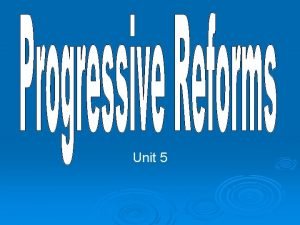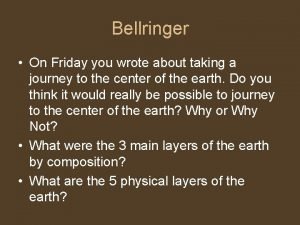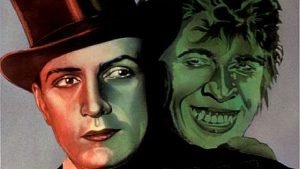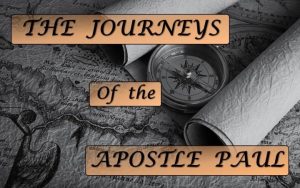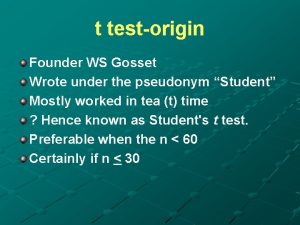Chapter 6 Study PP Who wrote the following



































































- Slides: 67

Chapter 6 Study PP

Who wrote the following: "Keep, ancient lands, your storied pomp!" cries she With silent lips. "Give me your tired, your poor, Your huddled masses yearning to breathe free, The wretched refuse of your teeming shore. Send these, the homeless, tempest-tost to me, I lift my lamp beside the golden door!" A) Henry Wadsworth Longfellow B) Walt Whitman C) Emily Dickinson D) Robert Frost E) Emma Lazarus

Answer: E) Emma Lazarus Explanation: Emma Lazarus wrote the poem "The New Colossus" in 1883. It is engraved on the base of the Statue of Liberty.

"Education is a social process. Education is growth. Education is, not a preparation for life; education is life itself. " Which American educational reformer insisted on a child-centered, practical curriculum and viewed education as playing a key role in developing citizenship and democracy? A) John Dewey B) Horace Mann C) James Conant D) Charles Eliot E) Henry Adams

Answer: A) John Dewey Explanation: Dewey, one of the founders of the progressive education movement, made a major impact on American education in the first decades of the 20 th Century. He insisted that the child be the center of every lesson and that the curriculum be practical and relevant. With a profound belief in the power of democracy, he also envisioned a different role for teachers: "The teacher is not in the school to impose certain ideas or to form certain habits in the child, but is there as a member of the community to select the influences which shall affect the child and to assist him in properly responding to these influences. "

The phrase "white man's burden" referred to A) American Indians B) the enormous cost of 19 th century European wars C) the sense of obligation felt by whites in England America to "civilize" non-white people D) the role of the Freedmen's Bureau in educating ex-slaves E) the results of the Mexican-American War

Answer: C) the sense of obligation felt by whites in England America to "civilize" non-white people Explanation: Imperialists viewed the white Christian culture as superior to non-white cultures. They justified colonial domination as a noble mission to bring civilization to needy natives of color. British author Rudyard Kipling penned "The White Man's Burden" in 1899 in which he referred to non-whites as "your new-caught, sullen peoples, half-devil and half-child. "

In which of the following presidential elections did a third-party candidate who was a former president win over four million votes and finish second in the Electoral College voting? A) 1824: Jackson, J. Q. Adams, Clay, Crawford B) 1860: Douglas, Bell, Breckenridge, Lincoln C) 1912: Taft, Wilson, Theodore Roosevelt D) 1968: Humphrey, Nixon, Wallace E) 1992: Clinton, George H. W. Bush, Perot

Answer: C) 1912: Taft, Wilson, Theodore Roosevelt Explanation: Republican Theodore Roosevelt, disappointed in his handpicked successor William Howard Taft, entered the 1912 election as a candidate of the Progressive or Bull-Moose Party, winning 88 electoral votes. Woodrow Wilson well over half of the electoral votes, however, garnering the largest electoral majority in U. S. history to that time. Ross Perot holds the record for most third-party popular votes for 1992 with 19, 237, 247 and 19% of the total.

The "World's Greatest Athlete" Which American athlete won both the decathlon and pentathlon gold medals at the Olympic Games, only to have them later taken away because of his professional status? A) Jesse Owens B) Bruce Jenner C) Bob Mathias D) Cassius Clay E) Jim Thorpe

Answer: E) Jim Thorpe, a Sac and Fox Indian, won both the decathlon and the pentathlon at the 1912 Olympic Games. He was congratulated by King Gustav V of Sweden with "You, sir, are the greatest athlete in the world. " Thorpe replied "Thanks, King. " Because Thorpe had accepted payment while playing semi-professional baseball, however, he was stripped of his medals by the Olympic Committee. They were posthumously reinstated in 1982, 30 years after Thorpe's death. Thorpe also played for three professional baseball and six professional football teams.

Pulitzer Prize-Winning Author Which of the following American authors, famous for his sparse and direct use of words, served as an ambulance driver in World War I, lived as an expatriate in Paris during the 1920 s, covered the Spanish Civil War as a journalist, and lived in Cuba and Key West Florida in his later life? A) James Michener B) Ernest Hemingway C) F. Scott Fitzgerald D) John Steinbeck E) William Faulkner

Answer: E) Ernest Hemingway won the Pulitzer Prize for The Old Man and the Sea. He lived a colorful life in Europe, Cuba, and the U. S. and developed a simple, direct style of prose that was both copied and mocked. He wrote: “There is nothing to writing. All you do is sit down at a typewriter and bleed” and “Poor Faulkner. Does he really think big emotions come from big words? He thinks I don't know the ten-dollar words. I know them all right. But there are older and simpler and better words, and those are the ones I use. ”

Child labor was one target of Progressive reforms Which of the following would most likely have supported Progressive reforms in the first decades of the 20 th century? (A) leaders of urban political machines (B) steel and oil company owners (C) white middle class city residents (D) bankers (E) migrant farm workers

Answer: (C) white middle class city residents Explanation: Progressivism was a largely urban movement of young white middle class and professional citizens who sought to use government to help address the ills of society. Progressives had their greatest impact on American life from 1900 -1920.

The Northern Securities case: (A) resulted in the Supreme Court ordering a railroad monopoly to be dissolved (B) was an example of President Theodore Roosevelt's refusal to get actively involved in trust cases (C) was based on the 1887 Interstate Commerce Act (D) resulted in a number of new holding companies and trusts being formed (E) established the principle that a holding company's intent to eliminate competition is protected by the Constitution

Answer: (A) resulted in the Supreme Court ordering a railroad monopoly to be dissolved Explanation: The 5 -4 Northern Securities Supreme Court decision (1903) ruled that the Sherman Antitrust Act prevented the establishment of holding companies that reduced competition.

Which of the following statements are true of the February 1917 Zimmermann Telegram: I. Germany pledged to help Mexico recover the regions of the American southwest that were lost by Mexico in the Treaty of Guadalupe Hidalgo II. Germany threatened the U. S. with trade sanctions if it entered the war III. Germany announced its intention to resume unrestricted submarine warfare IV. The U. S. intercepted a telegram from German to Mexican officials (A) I and IV only (B) I and III only (C) I, II, and III only (D) III and IV only (E) all of the statements are true

Answer: (B) I and III only Explanation: The Zimmermann Telegram, intercepted by British agents, informed Mexican officials that Germany intended to resume submarine warfare and promised to help Mexico regain its lost territories if it declared war on the U. S. By April President Wilson, who had long pledged to keep the U. S. out of the European war, asked Congress for a declaration of war.

Treaty of Paris, 1898 American soldiers celebrate victory at Santiago, Cuba In the 1898 Treaty of Paris (A) Guam became an independent nation (B) Spain admitted sole guilt for the destruction of the U. S. S. Maine (C) Spain gave up all claims to Cuba (D) the Philippine Islands were transferred to U. S. control with no payment to Spain (E) the U. S. agreed to give Cuba its freedom

Answer: (C) Spain gave up all claims to Cuba Explanation: The Treaty of Paris formally ended the 1898 Spanish-American War and gave the U. S. control over Puerto Rico, Cuba, Guam, and the Philippine Islands. The U. S. paid Spain $20 million for the Philippines.

During World War I (A) American intellectuals warmly welcomed the outpouring of patriotism and national pride (B) integration of black and white troops in combat units was common (C) American civil liberties were fiercely protected by both the Congress and the courts (D) the U. S. reduced its role as a creditor nation (E) the federal government set prices, controlled production and generally became heavily involved in the private sector of the American economy

Answer: (E) the federal government set prices, controlled production and generally became heavily involved in the private sector of the American economy Explanation: The War Industries Board and the Office of Price Administration supported the American war effort by establishing production quotas and prices.

The American negotiating team at Versailles, 1919 The most important goal of Woodrow Wilson at the 1919 Versailles meetings was to (A) establish an international organization to prevent future wars (B) end unrestricted submarine warfare (C) impose reparations payments on Germany (D) acquire colonies for the U. S. (E) force Germany to accept sole responsibility for the war

Answer: (A) establish an international organization to prevent future wars Explanation: The League of Nations, which the U. S. never joined, was key to President Wilson's plan of preventing future devastating wars similar to World War I.

During the 1920 s (A) American farm incomes increased dramatically (B) a number of American intellectuals became disenchanted with American values and moved to Europe (C) professional sports, including baseball and football, decreased in popularity (D) the number of American families able to purchase an automobile decreased (E) television sets became a regular feature in American homes

Answer: (B) a number of American intellectuals became disenchanted with American values and moved to Europe Explanation: "The Lost Generation" was the label given to the American intellectuals, including Ernest Hemingway and Gertrude Stein, who left the U. S. during the 1920 s and moved to Europe, most commonly France. Many became disillusioned with American society following World War I. Farm income decreased by 2/3 during the 1920 s. Professional sports increased in popularity during the 1920 s, as did a normal families' ability to purchase an automobile. Radios began appearing in American homes, but while the first television broadcast took place in 1928, televisions did not become readily available to consumers until the late 1940 s.

Which of the following characterized the flappers of the 1920 s? I. smoking cigarettes II. drinking alcohol III. wearing cosmetics IV. bobbed hair V. straight, tight dresses with bare arms (A) I, II and III only (B) I, III, IV and V only (C) I, III and V only (D) II, III, and IV only (E) all of the options characterized flappers

Answer: (E) all of the options characterized flappers Explanation: The young women known as flappers in the 1920 s smoked, drank, danced, bobbed their hair, and wore cosmetics. F. Scott Fitzgerald described the ideal flapper as "lovely, expensive, and about nineteen. " They often de-emphasized their curves and raised their hemlines to just below the knee. Both flapper behavior and dress were seen as unconventional and even outlandish and helped redefine women's roles.

One of the chief causes of the 1929 Stock Market Crash was (A) over-regulation by the federal government (B) the reduction of tariffs which gave foreign manufacturers an edge in the U. S. market (C) margin buying, which allowed investors to use a fraction of the cost of a stock to make a purchase (D) overly-aggressive tax policies which taxed the rich and thus discouraged stock market purchases (E) lack of interest by middle-class Americans in stock market investing

Answer: (C) margin buying, which allowed investors to use a fraction of the cost of a stock to make a purchase Explanation: While a number of factors led to the disastrous Stock Market Crash in October 1929, one of the chief causes was margin buying, which allowed investors to pay as little as 10% of the cost of stocks to make a purchase. As stock prices fell, the system collapsed as investors and lenders could not meet margin calls.

Harlem Renaissance Zora Neal Thurston Which of the following statements about the Harlem Renaissance of the 1920 s is accurate? I. It drew heavily on African roots for inspiration. II. During the 1920 s it was often referred to as the New Negro Movement. III. It had little lasting impact on American literary culture IV. Artists received significant financial support from wealthy white patrons. V. It promoted both literary and visual artistic efforts. (A) I, IV and V only (B) I, II and III only (C) I, III, IV and V only (D) I, II, and V only (E) all of the statements are accurate

Answer: (A) I, IV and V only Explanation: The Harlem Renaissance, which witnessed a cultural revolution that began in New York City and spread throughout the U. S. , was originally funded largely by wealthy white patrons. Poets, novelists, artists, and musicians all took part in the new movement. One of the leading authors was Zola Neal Thurston, whose Their Eyes Were Watching God featured this quote: "Ships at a distance have every man’s wish on board. For some they come in with the tide. For others they sail forever on the horizon, never out of sight, never landing until the Watcher turns his eyes away in resignation, his dreams mocked to death by Time. That is the life of men. Now, women forget all those things they don’t want to remember and remember everything they don’t want to forget. The dream is the truth. Then they act and do things accordingly. "

The Noble Experiment Federal agents destroying illegal kegs of alcohol during Prohibition The words "bootlegger, " "speakeasy, " and "noble experiment" all refer to: (A) the Ku Klux Klan (B) the Scopes Trial fundamentalist-modernist controversy (C) the 19 th Amendment (D) Prohibition (E) Mexican immigrants

Answer: (D) Prohibition Explanation: Herbert Hoover nicknamed Prohibition the "noble experiment. " Bootleggers illegally provided alcohol to customers and speakeasies were restaurants and clubs that surreptitiously served alcohol in violation of the 18 th Amendment, which made it illegal to produce, sell, or transport alcoholic beverages.

The Agricultural Administration Act (A) nationalized American farms (B) was repeatedly supported by U. S. Supreme Court decisions (C) raised farm income by limiting agricultural production (D) prevented any starvation in the U. S. (E) protected the legal rights of sharecroppers

Answer: (C) raised farm income by limiting agricultural production Explanation: Declared unconstitutional by the Supreme Court in 1936, the AAA attempted to bolster farm prices by reducing production and paying subsidies to farmers to reduce their planting acreage. While successful in raising the prices of some products, it provided little help to the sharecropper and tenant farmers of the U. S.

Which of the following New Deal acts included unemployment insurance? (A) the Social Security Act (B) the National Labor Relations Act (C) the Glass-Steagall Act (D) the Federal Emergency Relief Act (E) the National Industrial Recovery Act

Answer: (A) the Social Security Act Explanation: Pressured by critics such as Huey Long and Dr. Francis Townsend that the federal government wasn't doing enough for the poor, President Roosevelt promoted passage of the Social Security Act, which taxed both employers and workers to provide unemployment insurance, old-age insurance, and assistance for the blind and disabled.

New Deal opponents (A) exposed massive corruption in the Tennessee Valley Authority (B) were all from the political right (C) accused it of being socialist and fascist (D) found no support among Supreme Court justices (E) produced evidence of immorality and scandal in the Roosevelt household

Answer: (C) accused it of being socialist and fascist Explanation: The New Deal proposed by President Franklin Roosevelt earned enemies on both the left and the right and in the Supreme Court which overturned a number of programs.

A technique that labor unions first used with great effect in the 1930 s was (A) collective bargaining (B) blacklisting (C) the sit-down strike (D) the picket line (E) the boycott

Answer: (C) the sit-down strike Explanation: Auto workers in Flint, Michigan staged a sitdown strike in 1936 in a General Motors factory. Rather than protesting outside the factory, the workers staged their strike inside it. When police attempted to take over, the workers used fire hoses against them. Eventually the United Auto Workers were given protection by National Guard troops and became the exclusive bargaining representative for plant workers.

Displaying the NRA blue eagle indicated cooperation by a business establishment The National Industrial Recovery Act (A) provided emergency relief to unemployed workers (B) placed boys in rural labor camps and required them to send home money each month (C) prevented stock market abuses (D) encouraged fair competition and established minimum wages (E) provided federal insurance for bank deposits

Answer: (D) encouraged fair competition and established minimum wages Explanation: The National Recovery Administration sought to establish fair codes of competition, permit collective bargaining for workers, and establish minimum wages. Business owners placed a poster of the NRA Blue Eagle in their windows to indicate their participation in the federal program.

W. E. B. Du. Bois (A) supported an accommodationist position which emphasized self-help and self-improvement rather than on ending segregation (B) co-founded the SCLC (Southern Christian Leadership Conference), an important civil rights group (C) led the Niagara Movement which demanded that blacks be given the right to vote and that segregation be abolished (D) was an effective speaker and organizer for civil rights, but produced little written work (E) supported the 1895 Atlanta Compromise between black leaders and Southern white leaders

Answer: (C) led the Niagara Movement which demanded that blacks be given the right to vote and that segregation be abolished Explanation: Du. Bois, who was an effective speaker as well as a prolific writer on civil rights issues, strongly opposed the accomodationist position adopted by Booker T. Washington and the signers of the Atlanta Compromise. Instead, Du. Bois, who helped establish the NAACP, vigorously called for equal treatment for blacks, an end to segregation, and access to voting rights.

Which of the following is not an example of the muckraking journalism that emerged in the late 19 th and early 20 th centuries? (A) Theodore Dreiser wrote Sister Carrie, a depiction of the evils of urban life (B) Nellie Bly went undercover in a mental hospital, depicting a cruel and unjust system (C) Lincoln Steffens exposed city machines in The Shame of the Cities (D) Jacob Riis described the life of the urban poor in How the Other Half Lives (E) Ida Tarbell exposed Standard Oil Trust abuses

Answer: (A) Theodore Dreiser's Sister Carrie, a depiction of the evils of urban life Explanation: Muckrakers were investigative journalists who sought to promote reform by exposing wrongs in a number of areas of American life. Theodore Roosevelt wrote of the importance of muckrakers in 1906: "There are, in the body politic, economic and social, many and grave evils, and there is urgent necessity for the sternest war upon them. There should be relentless exposure of and attack upon every evil man whether politician or business man, every evil practice, whether in politics, in business, or in social life. I hail as a benefactor every writer or speaker, every man who, on the platform, or in book, magazine, or newspaper, with merciless severity makes such attack, provided always that he in his turn remembers that the attack is of use only if it is absolutely truthful. " Sister Carrie was a fictional account of a rural Wisconsin girl who becomes exposed to the harsh realities of the city.

The conscience of the people, in a time of grave national problems, has called into being a new party, born of the nation’s sense of justice. We. . . here dedicate ourselves to the fulfillment of the duty laid upon us by our fathers to maintain the government of the people, by the people and for the people whose foundations they laid. We hold with Thomas Jefferson and Abraham Lincoln that the people are the masters of their Constitution, to fulfill its purposes and to safeguard it from those who, by perversion of its intent, would convert it into an instrument of injustice. In accordance with the needs of each generation the people must use their sovereign powers to establish and maintain equal opportunity and industrial justice, to secure which this Government was founded and without which no republic can endure. The above statements came from which party platform during the presidential race in 1912? ◦ (A) Republican Party/William H. Taft (B) Democratic Party/Woodrow Wilson (C) Prohibition Party/Eugene W. Chafin (D) Socialist Party/Eugene Debs (E) Progressive or "Bull Moose" Party/Theodore Roosevelt

Answer (E) Progressive or "Bull Moose" Party/Theodore Roosevelt Explanation: Disappointed in the policies of his handpicked successor, William H. Taft, Theodore Roosevelt launched a new Progressive Party. Finishing second in popular votes, Roosevelt's presence in the race helped Democrat Woodrow Wilson win the election.

After 146 garment workers were killed in the Triangle Shirtwaist Fire: (A) the factory owners were imprisoned for endangering their workers (B) child labor laws were passed in all 48 states (C) the 18 th Amendment to the Constitution was ratified by Congress (D) New York state created a Factory Safety Commission which recommended laws improving working conditions (E) demand for inexpensive cotton garments decreased across the nation

Answer: (D) New York state created a Factory Safety Commission which recommended laws improving working conditions Explanation: The doors to the Triangle Shirtwaist Factory were chained shut to prevent unauthorized breaks by the workers, mainly young women, when a tragic fire broke out in 1911. In addition to the Commission, the fire led to the creation of the International Ladies' Garment Workers' Union, which pushed for safe working conditions for its members.

Which of the following was not a motivation for the U. S. involvement in a war against Spain in 1898? (A) Spanish concentration camps in Cuba (B) Filipino propaganda (C) popular support in the U. S. for Cuban independence (D) the publication of the de Lomé letter critical of President Mc. Klinely (E) sinking of the battleship Maine

Answer: (B) Filipino propaganda Explanation: President William Mc. Kinley found the U. S. ready for war with Spain in 1898 for a number of reasons, including brutal treatment of Cubans in Spanish-run concentration camps, support for Cuban independence fueled by newspapers, the publication of a critical letter by a Spanish diplomat which said of Mc. Kinley: "he is weak and catering to the rabble and, besides, a low politician who desires to leave a door open to himself and to stand well with the jingos of his party, " and the mysterious explosion on the U. S. S. Maine in Havana Harbor.

Anti-imperialists such as Mark Twain and Andrew Carnegie were most troubled by U. S. actions in which location following the Spanish-American War? (A) Cuba (B) Puerto Rico (C) Philippine Islands (D) Hawaii (E) China

Answer: (C) Philippine Islands Explanation: Following the Spanish-American War, a war between Filipinos and the American army was criticized severely by anti -imperialist individuals and groups in the U. S.

The Roosevelt Corollary to the Monroe Doctrine (A) was used to settle the Russo-Japanese War and earned Theodore Roosevelt the Nobel Peace Prize (B) was passed by both houses of Congress (C) in effect reversed the Monroe Doctrine (D) asserted that the U. S. had the right to intervene militarily in Latin America to preserve order (E) warned Europe that the U. S. desired a sphere of influence in China

Answer: (D) asserted that the U. S. had the right to intervene militarily in Latin America to preserve order Explanation: The Roosevelt Corollary, presented in a speech to Congress in 1904, extended the Monroe Doctrine by asserting that if economic order was needed to be maintained in a Latin American nation, the U. S. would intervene.

Which of the following was not an aspect of American economic changes in the 1920 s? (A) assembly line production (B) a reduction in tariffs on European goods (C) mass production (D) a growth in stock market investment (E) an emphasis on consumer goods and laborsaving devices

Answer: (B) a reduction in tariffs on European goods Explanation: Tariffs on foreign products rose during the 1920 s. Both the Fordney. Mc. Cumber Tariff (1922) and the Smoot. Hawley Tariff (1929) raised tariffs over previous levels.

The Scopes Trial indicated that (A) American fundamentalism was dead (B) Darwin's theory of evolution could be taught without controversy in American public schools (C) tension between rural, traditional values and urban, modern values was increasing in American society (D) religious teachings no longer had meaning for most Americans (E) the Creation story was accepted as metaphorical, not literal by most Tennessee residents

Answer: (C) tension between rural, traditional values and urban, modern values was increasing in American society Explanation: The 1925 Scopes Trial in Dayton, Tennessee served as a microcosm of the tensions growing in American society among a number of groups. During the trial, defense attorney Clarence Darrow cross-examined prosecuting attorney William Jennings Bryan in a stunning exposé of the literal biblical interpretation held by many traditional believers.

Which of the following was not part of Franklin Roosevelt's first year in office? (A) the U. S. went off the gold standard (B) the FERA (Federal Emergency Relief Act) was passed, providing emergency aid to poor families (C) the Emergency Banking Act required banks to demonstrate soundness before reopening (D) the Social Security system was established (E) the PWA (Public Works Administration) was started

Answer: (D) the Social Security system was established Explanation: Roosevelt wasted little time after his inauguration in March 1933. A variety of measures, mostly economic in nature, were passed by Congress in an attempt to get the country moving. The Social Security Act was passed in 1935.

Which of the following was not an example of the expanding bureaucracy of the federal government during World War 2? (A) War Labor Board (B) War Manpower Commission (C) Office of Price Administration (D) National Youth Administration (E) War Production Board

Answer: (D) National Youth Administration Explanation: The federal bureaucracy nearly quadrupled in size during World War 2. The most significant agency was the War Production Board which oversaw the conversion and expansion of factories and set priorities and schedules for American industry. The National Youth Administration (NYA) was a New Deal agency operating from 1935 to 1939 that focused on providing work and education for Americans between the ages of 16 and 24.
 Hình ảnh bộ gõ cơ thể búng tay
Hình ảnh bộ gõ cơ thể búng tay Bổ thể
Bổ thể Tỉ lệ cơ thể trẻ em
Tỉ lệ cơ thể trẻ em Chó sói
Chó sói Tư thế worms-breton
Tư thế worms-breton Chúa sống lại
Chúa sống lại Các môn thể thao bắt đầu bằng tiếng chạy
Các môn thể thao bắt đầu bằng tiếng chạy Thế nào là hệ số cao nhất
Thế nào là hệ số cao nhất Các châu lục và đại dương trên thế giới
Các châu lục và đại dương trên thế giới Cong thức tính động năng
Cong thức tính động năng Trời xanh đây là của chúng ta thể thơ
Trời xanh đây là của chúng ta thể thơ Cách giải mật thư tọa độ
Cách giải mật thư tọa độ Phép trừ bù
Phép trừ bù Phản ứng thế ankan
Phản ứng thế ankan Các châu lục và đại dương trên thế giới
Các châu lục và đại dương trên thế giới Thể thơ truyền thống
Thể thơ truyền thống Quá trình desamine hóa có thể tạo ra
Quá trình desamine hóa có thể tạo ra Một số thể thơ truyền thống
Một số thể thơ truyền thống Cái miệng xinh xinh thế chỉ nói điều hay thôi
Cái miệng xinh xinh thế chỉ nói điều hay thôi Vẽ hình chiếu vuông góc của vật thể sau
Vẽ hình chiếu vuông góc của vật thể sau Biện pháp chống mỏi cơ
Biện pháp chống mỏi cơ đặc điểm cơ thể của người tối cổ
đặc điểm cơ thể của người tối cổ Ví dụ về giọng cùng tên
Ví dụ về giọng cùng tên Vẽ hình chiếu đứng bằng cạnh của vật thể
Vẽ hình chiếu đứng bằng cạnh của vật thể Tia chieu sa te
Tia chieu sa te Thẻ vin
Thẻ vin đại từ thay thế
đại từ thay thế điện thế nghỉ
điện thế nghỉ Tư thế ngồi viết
Tư thế ngồi viết Diễn thế sinh thái là
Diễn thế sinh thái là Các loại đột biến cấu trúc nhiễm sắc thể
Các loại đột biến cấu trúc nhiễm sắc thể So nguyen to
So nguyen to Tư thế ngồi viết
Tư thế ngồi viết Lời thề hippocrates
Lời thề hippocrates Thiếu nhi thế giới liên hoan
Thiếu nhi thế giới liên hoan ưu thế lai là gì
ưu thế lai là gì Sự nuôi và dạy con của hươu
Sự nuôi và dạy con của hươu Sự nuôi và dạy con của hươu
Sự nuôi và dạy con của hươu Hệ hô hấp
Hệ hô hấp Từ ngữ thể hiện lòng nhân hậu
Từ ngữ thể hiện lòng nhân hậu Thế nào là mạng điện lắp đặt kiểu nổi
Thế nào là mạng điện lắp đặt kiểu nổi Ecological study vs cohort study
Ecological study vs cohort study Retrospective cohort study
Retrospective cohort study What is work study in management
What is work study in management Study less study smart
Study less study smart Phytogeography region of india
Phytogeography region of india Objectives of work study
Objectives of work study Difference between time study and motion study
Difference between time study and motion study Write, wrote, written
Write, wrote, written Who wrote hebrews
Who wrote hebrews The poem dedicated to consuelo
The poem dedicated to consuelo Tich miller poem analysis
Tich miller poem analysis The monsters are due on maple street youtube
The monsters are due on maple street youtube Who is the narrator in the monkey's paw
Who is the narrator in the monkey's paw Old ffa creed
Old ffa creed Who wrote the crow poem
Who wrote the crow poem Epic by virgil
Epic by virgil Awake united states author
Awake united states author The sniper short story theme
The sniper short story theme William shakespeare wrote romeo and juliet
William shakespeare wrote romeo and juliet Who wrote psalm 150
Who wrote psalm 150 Who wrote proverbs
Who wrote proverbs Psalm 150:6
Psalm 150:6 Setting of wuthering heights
Setting of wuthering heights To write wrote written
To write wrote written Petrarch
Petrarch I remember the night my mother was stung by a scorpion
I remember the night my mother was stung by a scorpion


















































